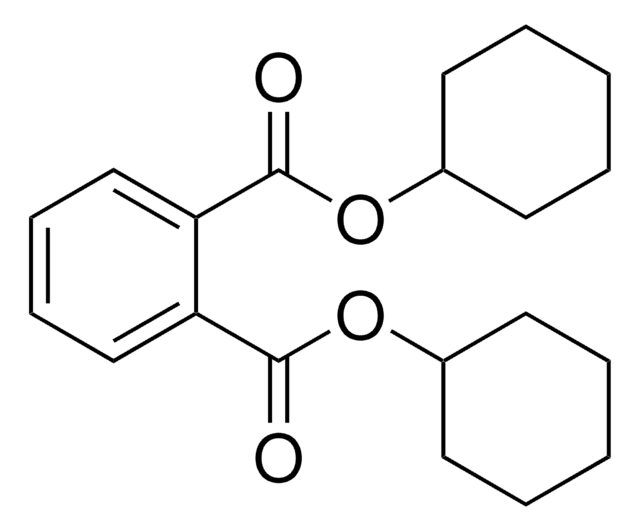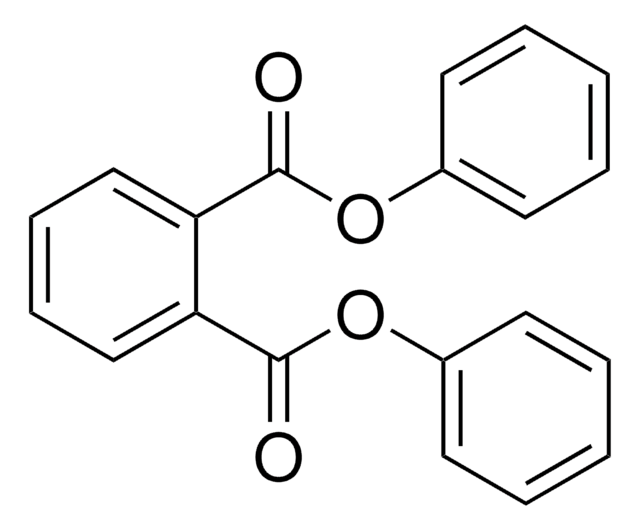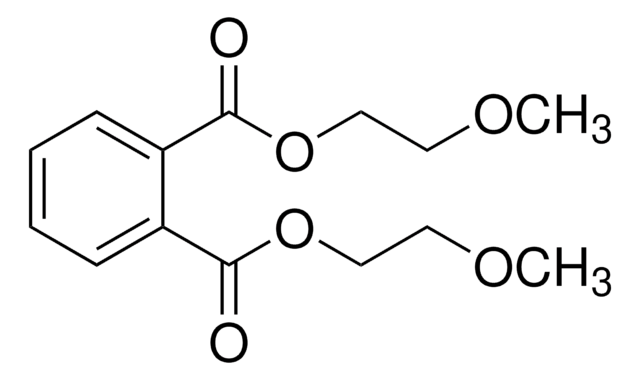308501
Benzyl butyl phthalate
98%
Synonyme(s) :
Butyl Benzyl Pthalate
About This Item
Produits recommandés
Densité de vapeur
10.8 (vs air)
Pression de vapeur
0.16 mmHg ( 150 °C)
Pureté
98%
Forme
viscous liquid
Température d'inflammation spontanée
450 °F
Indice de réfraction
n20/D 1.54 (lit.)
Densité
1.1 g/mL at 25 °C (lit.)
Chaîne SMILES
CCCCOC(=O)c1ccccc1C(=O)OCc2ccccc2
InChI
1S/C19H20O4/c1-2-3-13-22-18(20)16-11-7-8-12-17(16)19(21)23-14-15-9-5-4-6-10-15/h4-12H,2-3,13-14H2,1H3
Clé InChI
IRIAEXORFWYRCZ-UHFFFAOYSA-N
Informations sur le gène
mouse ... Esr1(13982)
Vous recherchez des produits similaires ? Visite Guide de comparaison des produits
Application
- Use as Plasticizer: BBP was predominantly used as a plasticizer in PVC to increase flexibility. Its application extended to products such as artificial leather, flooring, and adhesives (Wikiwand).
Mention d'avertissement
Danger
Mentions de danger
Conseils de prudence
Classification des risques
Aquatic Acute 1 - Aquatic Chronic 1 - Repr. 1B
Code de la classe de stockage
6.1C - Combustible acute toxic Cat.3 / toxic compounds or compounds which causing chronic effects
Classe de danger pour l'eau (WGK)
WGK 3
Point d'éclair (°F)
235.4 °F - closed cup
Point d'éclair (°C)
113.0 °C - closed cup
Équipement de protection individuelle
Eyeshields, Gloves, type ABEK (EN14387) respirator filter
Certificats d'analyse (COA)
Recherchez un Certificats d'analyse (COA) en saisissant le numéro de lot du produit. Les numéros de lot figurent sur l'étiquette du produit après les mots "Lot" ou "Batch".
Déjà en possession de ce produit ?
Retrouvez la documentation relative aux produits que vous avez récemment achetés dans la Bibliothèque de documents.
Les clients ont également consulté
Notre équipe de scientifiques dispose d'une expérience dans tous les secteurs de la recherche, notamment en sciences de la vie, science des matériaux, synthèse chimique, chromatographie, analyse et dans de nombreux autres domaines..
Contacter notre Service technique








